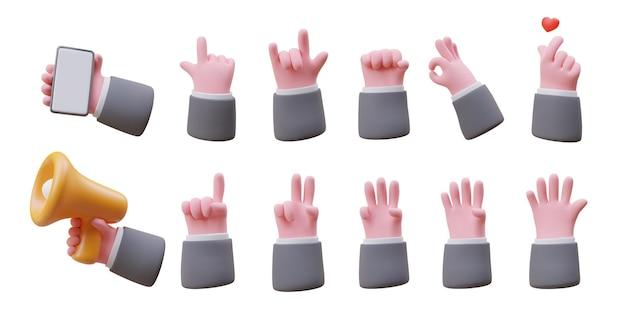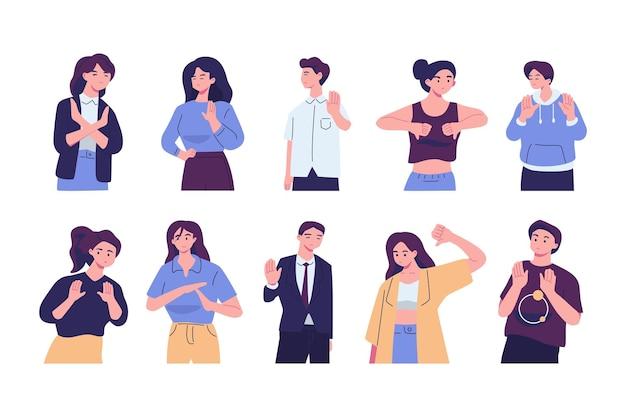Verbal and non-verbal communication are two essential components of human interaction. While verbal communication involves the exchange of information through spoken or written words, non-verbal communication includes body language, facial expressions, gestures, and even silence. Both forms of communication play significant roles in conveying messages and understanding each other better.
In this blog post, we will explore the dynamic relationship between verbal and non-verbal communication and how they work together to enhance our understanding of others. We will delve into the advantages of using both modes of communication and address any potential disadvantages of relying solely on non-verbal cues.
Understanding the interplay between verbal and non-verbal communication is crucial for effective communication. By recognizing and interpreting these cues correctly, we can improve our connections, avoid misunderstandings, and establish stronger relationships. So, let’s dive into the fascinating world of verbal and non-verbal communication and discover how they complement each other in our day-to-day interactions.

How Verbal and Nonverbal Communication Complement Each Other
Verbal and nonverbal communication are like a dynamic duo, working together to create a powerful impact on our interactions. It’s like a game of charades mixed with a spelling bee! Let’s dive into how these two communication styles complement each other and make our conversations more effective and entertaining.
Understanding the Unsaid: Nonverbal Cues Speak Volumes
Have you ever heard the phrase, “Actions speak louder than words”? Well, when it comes to communication, nonverbal cues take the center stage. We’re talking about body language, facial expressions, and even the tone of voice. These unspoken signals can convey emotions, intentions, and attitudes without uttering a single word.
Picture this: you’re having a conversation with a friend, and they’re talking about their favorite food. As they describe the juicy burger they had last night, their face lights up with excitement, their mouth waters, and their hands gesture as if they’re holding that delicious burger. These nonverbal cues amplify the impact of their words, making you almost taste that juicy delight yourself!
Verbal Brilliance: Words That Paint a Picture
Now, let’s shift our focus to the power of words. Verbal communication allows us to express our thoughts, share ideas, and create vivid imagery. It’s like having a personal storyteller inside us, ready to captivate our audience with every word we speak.
For instance, imagine you’re telling a story about your recent camping trip. With carefully chosen words, you can transport your listeners to the peaceful serenity of the forest, describe the crackling of the campfire, and make them smell the fresh aroma of roasted marshmallows. Verbal communication takes us on a journey, and with the right delivery, we can make it a rollercoaster ride of emotions and excitement!
A Perfect Blend: The Symbiotic Relationship
Verbal and nonverbal communication may be like two different puzzle pieces, but when combined, they create a masterpiece. It’s like peanut butter and jelly, a match made in communication heaven!
Imagine you’re attending a job interview. As you answer the interviewer’s questions with confidence, your nonverbal cues play a crucial role in reinforcing your words. Your firm handshake showcases your assertiveness, your upright posture displays your professionalism, and your eye contact reveals your sincerity. These nonverbal cues complement your verbal responses, leaving a lasting impression on the interviewer.
In everyday conversations, verbal and nonverbal communication work hand in hand to make our interactions more effective and engaging. The right combination of words, gestures, and body language can convey our thoughts clearly, express our emotions effectively, and build stronger connections with those around us.
The Magic Recipe: Enhancing Communication Skills
Now that we understand the symbiotic relationship between verbal and nonverbal communication let’s touch on a few tips to enhance our own communication skills:
- Active Listening: Pay attention not only to the words being said but also to the nonverbal cues. It’s like being a detective, observing every tiny detail to truly understand the message.
- Mirror, Mirror: Try mirroring the body language of the person you’re talking to (without being creepy, of course!). Mirroring creates a sense of rapport and shows that you’re engaged in the conversation.
- Fill in the Blanks: If someone’s words don’t match their nonverbal cues, it’s okay to politely seek clarification. We’re all human, after all, and sometimes our body language can have a mind of its own!
By honing our awareness of both verbal and nonverbal communication, we can become master communicators, effortlessly navigating any conversation and leaving a lasting impact on everyone we interact with.
So, the next time you find yourself in a conversation, remember the power of words and actions. Embrace the magic that happens when verbal and nonverbal communication come together, and witness the transformation in your connections and the level of understanding. Communication is an art, and you, my friend, are the artist!

FAQ: How Verbal and Non-Verbal Communication Complement Each Other?
How Do Verbal and Non-Verbal Communication Complement Each Other
Verbal and non-verbal communication are like peanut butter and jelly—they go together perfectly! Verbal communication involves the use of words, while non-verbal communication includes facial expressions, body language, gestures, and tone of voice. When these two forms of communication work together, they create a powerful combo that enhances understanding and connection between individuals.
Are There Any Disadvantages of Non-Verbal Communication in Class 10
Oh, we do have a couple of cautionary notes here. While non-verbal communication is essential for effective understanding, it can sometimes be misinterpreted. Class 10 students, listen up! If you rely solely on non-verbal cues, you might end up sending the wrong message or confusing your classmates. So, strike a balance between verbal and non-verbal communication, and don’t forget to use your words!
What is the Main Type of Non-Verbal Communication
Non-verbal communication comes in many forms, but the most prominent type is body language. Our bodies have a way of speaking without words. From a friendly smile to a firm handshake, our body language can convey emotions, intentions, and attitudes—sometimes even more powerfully than words themselves.
Is Verbal or Non-Verbal Communication Key to Better Communication
Now, this is a bit of a trick question! Verbal and non-verbal communication are like a dance—they need each other to create harmony. While verbal communication provides the necessary information, non-verbal cues add depth and emotion to the conversation. So, if you want to be a communication superstar, make sure to blend both verbal and non-verbal elements in your interactions.
Are Non-Verbal Messages More Believable Than Verbal Messages in a Conversation
Well, believe it or not, non-verbal messages often steal the show! When we communicate face-to-face, our non-verbal cues speak louder than words. We can fake emotions with our words, but our body language usually spills the beans. So, when in doubt, trust your gut instincts and pay close attention to those non-verbal signals—because they don’t lie!
What’s Harder to Interpret: Verbal or Non-Verbal
Ah, the eternal question! While both forms of communication have their complexities, many people find non-verbal cues a bit more challenging to interpret. You see, words can be clarified, but decoding non-verbal cues requires a keen eye and a touch of Sherlock Holmes’ detective skills. So, if you ever find yourself puzzled by an eyebrow raise or a nod, don’t worry—you’re not alone!
Which of the Following is Not Associated with Non-Verbal Communication
Now, let’s play a little game of “spot the odd one out.” Among these options, written messages are not typically associated with non-verbal communication. While written words can be a powerful means of communication, they fall under the domain of verbal communication rather than non-verbal. So, when it comes to decoding non-verbal clues, don’t reach for your pen and paper!
What Does It Mean When Your Verbal and Non-Verbal Communication Do Not Match
Oh, the infamous mismatch! When your verbal and non-verbal messages don’t align, chaos can ensue. Picture this: You’re saying “I’m totally fine” with a big, bright smile, but your crossed arms and furrowed brows suggest otherwise. These mixed signals can confuse others and lead to misunderstandings. So, make sure your words and body language are on the same page to avoid any communication hiccups!
Can You Provide an Example of Using Non-Verbal Communication to Regulate Verbal Communication
Absolutely! Imagine you’re having a heated discussion with a friend. Things are getting intense, and it’s time to take a breather. You use a gentle touch on their shoulder and take a step back to give them some space. In this scenario, your non-verbal cues are regulating the verbal communication by indicating a pause and a need for a calmer atmosphere. Non-verbal communication can work wonders in managing the flow and dynamics of a conversation.
How Can You Interpret Non-Verbal Cues More Accurately
Ah, the art of reading between the lines! To interpret non-verbal cues with finesse, observe the bigger picture. Pay attention to facial expressions, body movements, gestures, and overall context. Remember, a single gesture might not reveal the full story, so look for clusters of non-verbal cues to gain deeper insight into someone’s emotions and intentions. With practice, you’ll become a non-verbal communication guru!
What Constitutes Effective Non-Verbal Communication
Effective non-verbal communication involves sending and receiving messages accurately, congruently, and with impact. It’s about creating a harmonious dance between your words, facial expressions, body language, and tone of voice. By aligning all these elements, you can ensure that your message is delivered authentically and received with clarity. Now that’s what we call a communication masterpiece!
Can You Share Some Examples of Non-Verbal Communication
Certainly! Non-verbal communication is all around us. From a warm hug when reuniting with an old friend, to a high-five after scoring a goal, these gestures provide a more personal touch than mere words. Other examples include a thumbs-up for approval, a wink for flirtation, or even a stern glare to express disapproval. Non-verbal cues allow us to communicate on a deeper level, adding depth and emotion to our interactions.
What are the Five Planning Steps of Writing an Effective Message
When writing an effective message, consider these five planning steps:
- Identify your goal: Determine what you want to achieve with your message.
- Analyze your audience: Understand the needs, preferences, and expectations of your audience.
- Choose the right medium: Select the best platform or channel to deliver your message.
- Craft a compelling message: Create content that is clear, concise, and tailored to your audience.
- Review and revise: Ensure your message is error-free, persuasive, and engaging by proofreading and revising before sending it out.
By following these planning steps, you’ll be well on your way to writing messages that captivate and resonate with your intended recipients.
What is Not a Characteristic of Verbal Communication
Here’s a verbal communication dilemma for you! Among these options, ambiguity is not a characteristic of verbal communication. Verbal communication aims to transmit information clearly and effectively using words. Ambiguity, on the other hand, refers to uncertainty or multiple interpretations. So, when it comes to verbal communication, let’s keep things crystal clear and avoid any confusion!
And there you have it—the most burning questions about how verbal and non-verbal communication complement each other, all laid out like a buffet of knowledge. Now, armed with a deeper understanding of the magic that happens when words and body language combine, you’ll be able to communicate like a pro. So, go forth, my friend, and use this powerful duo to connect, express, and conquer the world—one conversation at a time!
